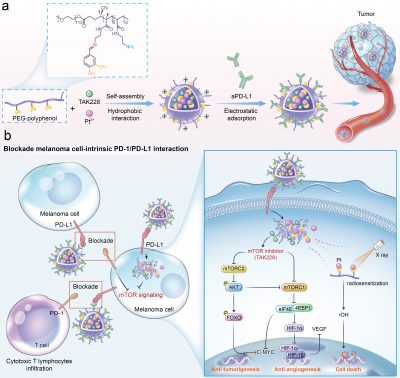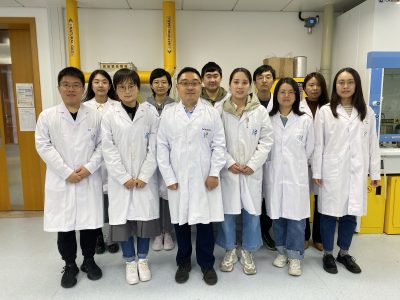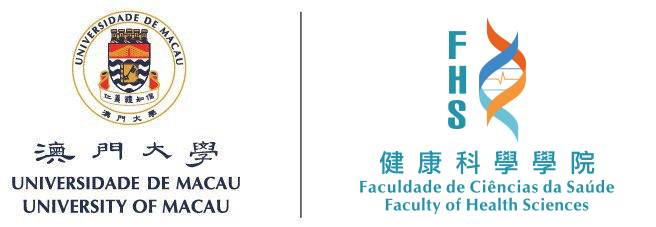A team led by Associate Professor Yunlu DAI in the University of Macau (UM) Faculty of Health Sciences (FHS) has made a breakthrough in struggling malignant melanoma. The study harnessed metal polyphenol network to simultaneously block the tumour-promoting effect between melanoma cells and improve the anti-tumour efficacy of radiotherapy, finally awakening the body’s anti-tumour immunity to achieve maximum tumour clearance. The discovery holds promise for the clinical treatment of patients bearing malignant melanoma. The study has been published in Bioactive Materials, an internationally renowned journal in the field of biomaterials.
Malignant melanoma is highly aggressive and easily metastatic due to mTOR overactivation-induced tumorigenesis, angiogenesis, and radioresistance, which seriously threatens human health. To construct an effective strategy for eradicating malignant melanoma, Prof. Dai’s research team used metal polyphenol nanosystems to encapsulate radiosensitizer platinum ions and mTOR inhibitor concurrently, followed by the adsorption of anti-PD-L1 antibody on the outer layer of nanoparticles by electrostatic adsorption to achieve precise targeting of melanoma and interaction blocking. The metal polyphenol nanosystems were endowed with a pH-responsive performance by the imine bonds for drug release in the acid tumor microenvironment. The released mTOR inhibitor TAK228 intercedes the melanoma cell-intrinsic PD-1/PD-L1 interaction via dampening protumorigenic mTOR pathway, which avails to downregulate protumorigenic cMYC and proangiogenic HIF-1α. Besides, mTOR inhibition is conducive to relieve radio-resistance. Therefore, the radiotherapy sensitized by radiosensitizer platinum was combined to kill tumours and induce strong anti-tumour immunity. Finally, the anti-tumour effect in mice and the results of immune response showed that the precise metal polyphenol nanosystem could break the proliferation and invasion characteristics of melanoma, and the combination of sensitized radiotherapy summoned a strong anti-tumour immunity to continuously clear melanoma.
Prof. Dai is the corresponding author of the study, and his PhD students Wenxi LI and Jie YAN are the co-first authors. Others who have contributed to the study include PhD students Hao TIAN, Guohao WANG, Research Assistant Professor Bei LI and the members of the Genomics, Bioinformatics and Single Cell Analysis Core and the Proteomics, Metabolomics and Drug Development Core in the Faculty. This work was supported by the National Natural Science Foundation of China (file no. NSFC 32171318 and 32101069), UM (File no. SRG2018-00130-FHS), the Science and Technology Development Fund, Macau SAR (File no. 0109/2018/A3, 0011/2019/AKP, 0113/2019/A2, 0103/2021/A, and 0002/2021/AKP) and Shenzhen Science and Technology Innovation Commission, Shenzhen-Hong Kong-Macau Science and Technology Plan C (No. SGDX20201103093600004). The full version of the research article can be viewed at https://doi.org/10.1016/j.bioactmat.2022.09.006.

The fabrication process and anti-tumor mechanism related to metal polyphenol nanosystems (APTP nanobraker).
(a) Schematic illustration of amphiphilic PEG-polyphenolassisted assembly of APTP NPs.
(b) Mechanism illustrationof APTP NPs against melanomaintrinsic tumor aggression.

Prof. Dai and his research team

